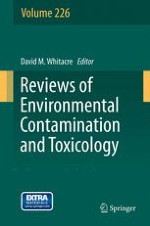2013 | OriginalPaper | Chapter
Do Cd, Cu, Ni, Pb, and Zn Biomagnify in Aquatic Ecosystems?
Authors : Rick D. Cardwell, David K. DeForest, Kevin V. Brix, William J. Adams
Published in: Reviews of Environmental Contamination and Toxicology Volume 226
Publisher: Springer New York
Activate our intelligent search to find suitable subject content or patents.
Select sections of text to find matching patents with Artificial Intelligence. powered by
Select sections of text to find additional relevant content using AI-assisted search. powered by
